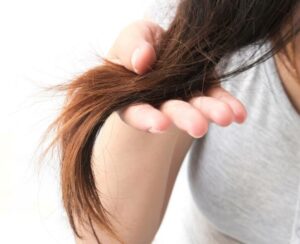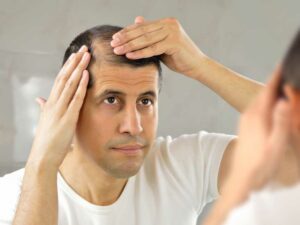At some point in their life, most men will go through some form of hair loss. The facts may be sad but they are true. According to the American Hair Loss Association, about two-thirds of American men will start to lose some hair by the age of 35. By age 50, about 85 percent of men will have experienced significant hair loss. That’s the bad news. The good news is that if caught early enough, hair loss can be reversed or managed with an effective hair loss treatment.
The longer you wait to address your hair loss issues, the harder and more expensive it becomes to reverse the effects. This is why we encourage action as soon as you notice any hair thinning, balding or receding of the hairline. In order to do this, it is essential that you are aware of the early indicators is of hair loss. Let’s get into it…
Okay, you may not need expert opinion to notice this one but we feel it important to note that there is a difference between light shedding and shedding you should be concerned about. On average, most people lose between 50 – 100 hairs a day. If you wake up to a few hairs on your pillow or a few hairs in your sink, then you have no need to worry. On the other hand, if you notice more and more hair falling each day, then you may be experiencing early signs of hair loss. This type of hair shed is worth looking into. A good way to tell is by checking the hair in your drain daily or by inspecting your hair brush daily.
-
NOTICEABLE CHANGES TO YOUR HAIRLINE
Another sign to look out for is hair loss in the temple area or on the crown. The best way to observe this by looking in the mirror daily and tracking the line or by observing older photos of yourself. A common characteristic of a receding or balding hairline is the observance of an M or V shape along the hairline. This typically happens when the front of your hairline recedes a little farther than the sides of the hair.
-
MORE SCALP VISIBILITY
If you start to notice more visible areas of scalp, this is likely a sign that you are experiencing hair thinning or balding. You may notice this by running your hands through your hair and if you see more exposed scalp, then you likely need to look into this.
SO WHAT CAN YOU DO TO PREVENT HAIR LOSS?
Now that we know what signs to look out for, let’s look into how to prevent hair loss from getting worse. With all of the information out there on treatments and even surgery for hair restoration, it can be truly overwhelming deciding which product to use for the stage of hair loss your are in. The one thing we want to emphasize before we get into the options for treatment is that there is no “magic cure” for hair loss. Hair restoration is a process that can take months to see results and requires consistent use over time.
The best known solutions for hair loss include Finasteride (also known as Propecia), Ketoconazole and Minoxidil. Together these treatments are known as the “Big Three”. We recommend sticking with Minoxidil and Ketoconazole, as Finasteride can have some unintended side effects like Erectile Dysfunction.
If you think you have any of the early indicators of hair loss, we advise that you take action to prevent further hair fall and to reverse the damage already done. If you aren’t sure where to start, you can take our free hair loss evaluation to:
- Determine the stage of hair loss you are at.
- Determine which treatment would work best for you.
Take the free hair loss evaluation here – http://bit.ly/hairlossevaluation





